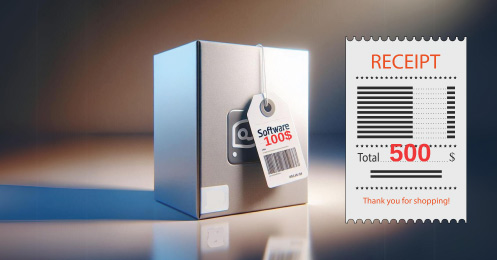Effectively managing and maintaining control over your inventory is crucial in meeting customer demand and boosting sales. This inventory management article delves into the different Inventory Problems faced by inventory managers in the wholesale and distribution industry and offers valuable insights on how to overcome them. By addressing these inventory problems head-on, you can streamline your operations, reduce costs, and ultimately improve customer satisfaction.
Discover more by delving into our comprehensive guide on effective inventory management.
Inconsistent Data
One of the more important aspects of your inventory is the data that comes along with it. You need to know, at all times, what exactly you have on hand and what is in transit both on its way in and on its way out. Inventory information should be tracked regularly to maintain accurate information.
Warehouse Efficiency
If you are experiencing problems shipping the right products to the correct customers, that could be due to warehouse inefficiencies. Many tasks take place in the warehouse regarding inventory including receiving, putting away, picking, packing and shipping, so, maintaining high efficiency can be a tall task. If inventory isn’t following efficient processes, it will lead to stocking problems.
Demand Fluctuation
It can be difficult to overcome seasonal demand fluctuations – for example, you will need to be able to adjust inventory levels to accommodate holiday orders ahead of the rush.
Limited Real-time Visibility
Real-time visibility refers to the ability to view inventory information in real-time or live. Some business systems allow you to see if inventory is in a cart in the warehouse being moved from one location to another. This kind of visibility allows management to make timely, data-driven decisions.
Poor Demand Forecasting
Another common inventory problem that relates to reporting is demand forecasting. Maybe there is a new product launch or promotional campaign that you expect will increase the order or a particular kit, you will want to be prepared both with enough stock and with the right warehouse processes in place to handle the increase.
Deadstock/Obsolete Inventory
Products that are no longer in demand or have reached the end of their shelf life (Reached expiration date) take up valuable space in the warehouse and often cause inventory problems for warehouse management.
Overstocking
Excess Inventory may sound nice but will eventually turn into dead stock if not sold when relevant.
Understocking
High seasonal demands or products that end up going “viral” on social media lead to product unavailability and upset customers.
Backordering
Many wholesalers and distributors deal with backorders and without the right systems to help manage backorder, they often lead to operational inefficiencies.
Holding Costs
It gets expensive to store products that are not selling. The costs associated take away from a product that does sell.
Regulatory Compliance
If you are in the medical or food industry, you will already know that there are multiple regulator compliance laws that you need to be compliant with including the DSCSA that has recently come into effect within the pharmaceutical industry.
Lot Tracking
While certain industries have specific regulatory compliance laws, numerous industries handle lots or batches of products primarily for the purpose of organization rather than compliance. Implementing lot tracking is crucial for effective inventory management.
Supply Chain Disruption
If you choose to engage in business with international partners, it is crucial to embrace adaptability when it comes to receiving your product. The responsibility of determining the shipment will lie in their hands, which means you will need to navigate through unpredictable lead times.
Inadequate Tracking
Small businesses can often rely on manual processes to track inventory but as business grows you will benefit from an inventory system designed to help you manage your inventory.
Lack of Automation
Investing in the automation of manual, tedious tasks will save your company time and money in the long run and avoid inevitable human error.
Insufficient order management
Knowing what to order and when are inventory problems mentioned above, but in addition is the issue of order management. What if you have multiple suppliers? How do you know which one to order from? With the right inventory system, you can automate the task of determining which vendor to order from and create the purchase order that awaits approval from management.
Increasing Competition
eCommerce has played a significant role in the globalization of supply chains, providing consumers with the convenience of shopping from the comfort of their own homes. With increased access to information, consumers are now more empowered and quicker to adapt their preferences which makes competition all that much more of a problem.
Recall Management
Selling products is one thing but the management of products when returned is another inventory challenge that is often overlooked. You will need to determine if the product can be resold and how it will be stored until it is or until it is disposed of.
Landed Cost Tracking
Are you making sales, only to determine that you lost money on them after all the costs are considered? That’s because you aren’t properly tracking landing costs.
Sales Channel Management
When selling products with multiple selling channels you will be dealing with channel integration to your inventory system, and channel-specific promotions.
Poor Communication
When departments can share information without restriction, employees are able to conduct their tasks seamlessly. The biggest plus to good communication is the accuracy of information. It’s important that everyone has the same information.
Limited Range of Products
If the success of the business is heavily reliant on only a few products, it can cause problems if demand fluctuates and inventory becomes unbalanced. With the globalization of supply chains, customers might choose a competitor with a more extensive inventory to choose from.
Inefficient Inventory Management Software & Technology
To optimize logistics operations, it is vital to incorporate a robust business process system that includes advanced inventory management functionality. This cutting-edge system has the capability to automate numerous tasks, effectively eliminating the above challenges. Once the system is implemented, it becomes crucial to seamlessly integrate it with other departments, ensuring a smooth and uninterrupted flow of information throughout the organization.
These are just some of the common problems experienced by inventory managers in the wholesale and distribution industry.
Let's explore 3 approaches to solving these inventory problems:
Investing in People
Option one is a fairly obvious one — perhaps you are trying to run on too few staff. The more rushed employees are, the more likely they are to make mistakes. Hiring is often seen as a last resort, and for good reason, but sometimes it may be necessary in order to meet demand, prevent errors, and move the business forward.
The benefit of this approach is that additional employees will almost certainly help with backlogs. Depending on the employees' capabilities, it may be possible to deploy them in several different roles.
The downside, however, is readily apparent. Employees are not cheap. Even the lowest paid employees may cost you $40-50,000 a year, and while a warehouse employee will help with picking and packing, they will not likely be able to help out with accounting, admin or overall inventory management.
Investing in Processes
If it's been a while since you took a close look at your inventory processes, then that's a good place to start. With the appropriate processes defined and training on those processes in place, employees are more likely to be productive and accurate. Consult with someone who has extensive inventory management or operations experience to improve efficiency and reduce warehouse errors.
Process improvement can help solve many inventory problems, improve efficiency and address redundant or ineffective business processes.
Investing in Software
Investing in software is often an alternative to hiring additional employees. Read our article “Overworked Employees” to help you determine if your employees are overworked.
While a good system will not entirely eliminate the need to hire again, it can certainly reduce the number of employees it takes to operate effectively. At $40-50,000 a head, per year, it's obvious that a system that can save you even a single employee is worth some serious consideration.
When approaching the idea of a new inventory and accounting system, evaluate the cost of the new system against the cost of new employees who would have to be hired (without increased efficiency). An integrated system will also improve efficiency across the entire business.
None of these approaches is mutually exclusive — you may need to "mix and match" these approaches. Certainly, a combination of at least 2 of these approaches could greatly improve operations.










